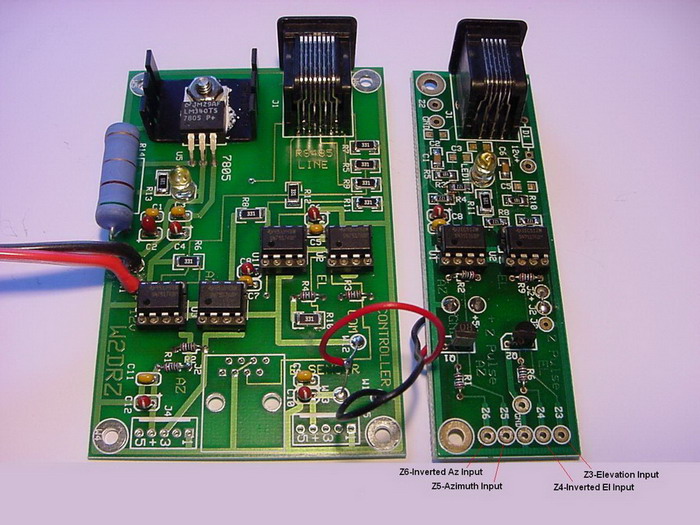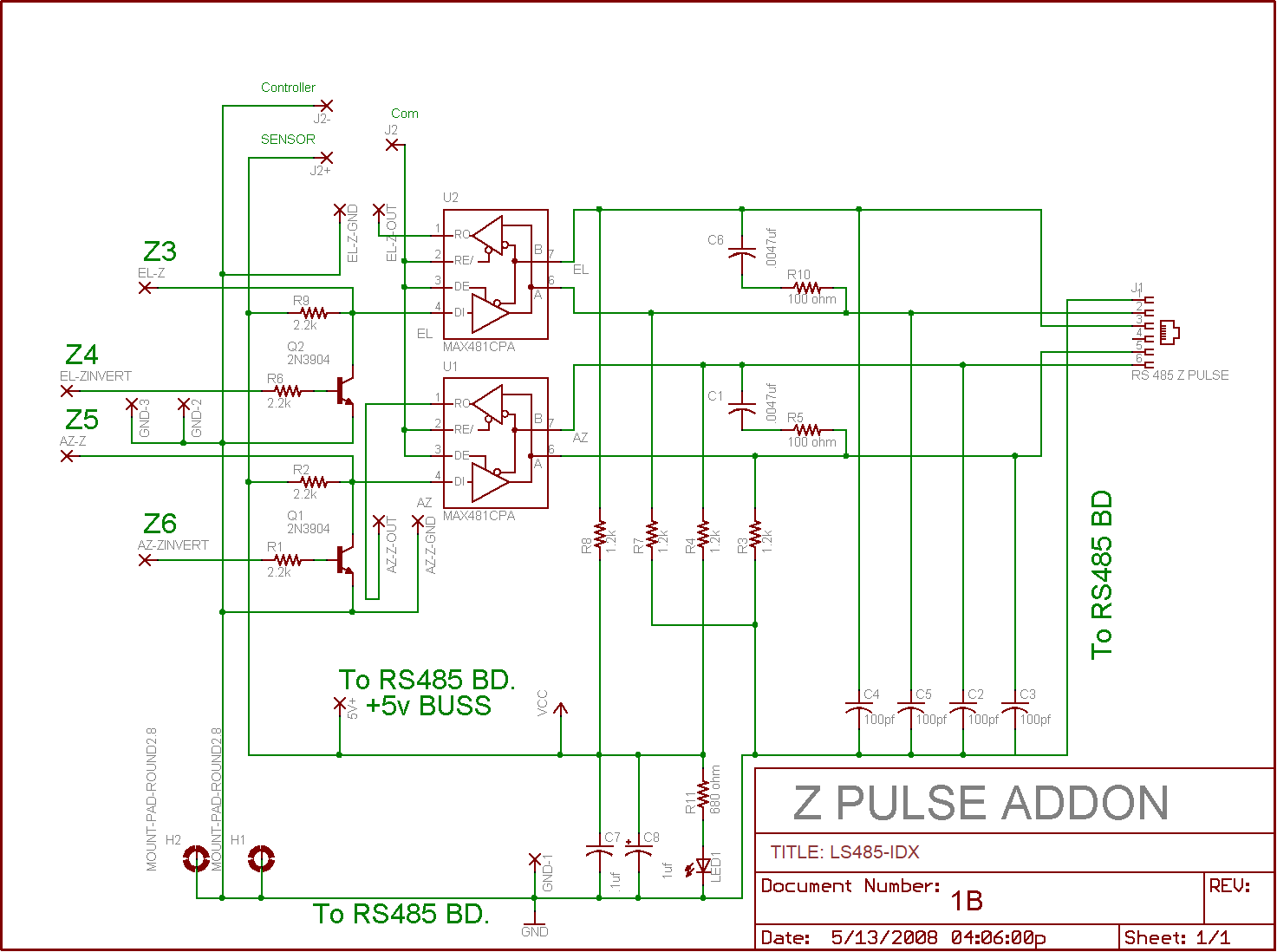The LS485-IDX is a LS-485-1 with an index board attached. This combination is only needed at the encoder (antenna) end of the system. See below for details and wiring information.
| This page shows how to assemble and wire the LS485-IDX board.
The board is used to convert TTL level index pulses from an incremental
encoder to RS485 level signals to be transmitted to the CT-2 controller.
For index operation you will need to order one LS485-1 and one
LS-485-IDX boards. Below you will find the following sections: System connection diagram |
 This picture shows the connections between the LS485-IDX (left) and the LS485-1 boards. The red and black jumper wires are +5 volts and ground (supplying the index board). The connections from the encoders for position data connect to the pads labeled J4 and J5 on the LS485-1 board as detailed in the RJ45 page. The index pulse leads from the encoders go to the pads on the LS485-IDX board as shown above.
Note the +12v and ground (red and black) wires connecting to the LS485-1
board (at left above). A long CAT5 cable run will not have enough
current capability to supply the LS-485 boards. So when the LS485-1 board is used at the
encoder end of the line it must be supplied with a local source of +12
to +14 volts. If this power supply is remote from the board, be
sure to use heavy enough wire so that the voltage at the LS485-1 is at
least +12 volts. The regulator on the LS485-1 board has enough
current capacity to supply the +5 volts to the index board.
|
 |